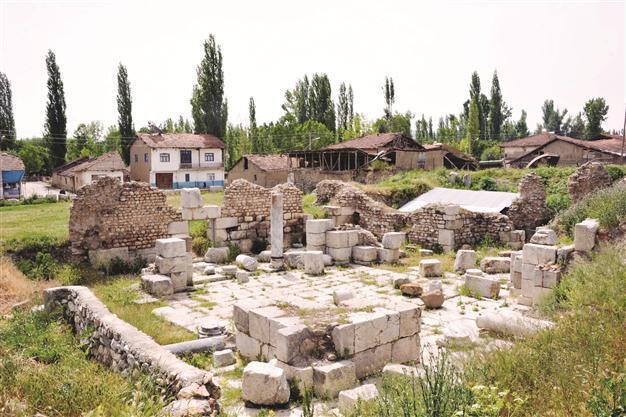Excavations to begin in ancient Sebastapolis after two decades
TOKAT - Anatolia News Agency

The ancient city of Sebastapolis, known as one of the five largest cities in the Black Sea 2,000 years ago, was the capital of a number of states in the past. Archaeological excavations will soon begin once again after 22 years. AA photo
After a 22-year hiatus, archaeological excavations will begin once again in the ancient city of Sebastapolis in the Central Anatolian province of Tokat’s Sulusaray district.Sulusaray district administrator Yaşar Kemal Yılmaz said Sebastapolis was known as one of the most significant ancient cities in the Central Black Sea and Northeastern Anatolian region.
Yılmaz said the ancient city had been the capital of a number of states in the past. “One of the leading Roman cities, Sebastapolis, is regarded as a ‘second Ephesus’ by archaeologists and experts. It is a highly significant area. But because of some technical problems and a lack of interest, the excavations that were carried out between 1987 and 1991 were insufficient. The ancient city is in a bad and idle situation. We are doing our best for the protection of ancient pieces there with the help of security forces. Excavations should begin as soon as possible to unearth these works and present them to the world,” he said.
Yılmaz added that unearthing the ancient city was also important for Sulusaray district in terms of attracting visitors. “Sebastapolis has strategic importance. The ancient works will shed light on the past. Once the ancient city is unearthed, the district will be a center of attraction,” he said.
Yılmaz said the excavation works would begin this month under the leadership of the Tokat Museum Directorate and the scientific consultancy of Gaziosmanpaşa Univesity History of Department member Associate Professor Şengül Dilek Ful.
Ancient city of Sebastapolis
It is reported in some resources that the ancient city of Sebastapolis was established in the 1st century B.C. The ancient city was included in the Cappadocia region after being separated from the Pontus Galatius and Polemoniacus states at the time of the Roman Emperor Trajan between 98 and 117 A.D. It was known as one of the five largest cities in the Black Sea 2,000 years ago because of the fact that it was located on passageways and thanks to its thermal sources, which are still being used today.
As an indicator of its wealth at the time of the Roman Empire, Sebastapolis had the authority to print money. It is reported that the city lost its importance and was forgotten over time, largely due to big wars, destruction, disasters and changes to passageways.
















